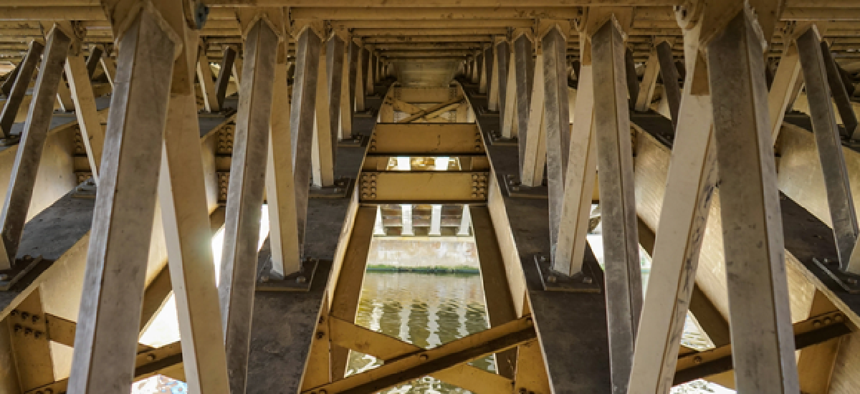Drones audition for bridge inspections


Connecting state and local government leaders
Ohio is joining Minnesota, Connecticut and Delaware in testing how unmanned aerial systems can improve safety, reduce costs and increase efficiency in bridge inspections.
Ohio is the latest state to explore using unmanned aerial systems for bridge inspections.
The Ohio Turnpike and Infrastructure Commission is working with the Ohio/Indiana Unmanned Aircraft Systems Center, the Ohio Department of Transportation and senseFly, a UAS company, to conduct its first bridge inspection by drone, according to a report on Cleveland.com.
Ohio’s Sandusky River Bridge is 970 feet long and usually undergoes a “hands-on” inspection by an engineering firm. Yet because of its size, these inspections can be difficult, timely, costly and unsafe -- making them the perfect job for a drone. Typically, the drones have global positioning systems, proximity sensors, 3D imaging software and high-definition cameras. They can provide photos and videos of rust and cracks so engineers can inspect the footage for defects.
Randy Cole, executive director of the Ohio Turnpike and Infrastructure Commission, told Cleveland.com that his office would compare the quality of data collected by drone inspection with data collected by human inspectors.
UAS inspection could also eliminate the need to shut down parts of the turnpike during the work. And if the drones are successful, the Turnpike and Infrastructure Commission said it also will consider using them for construction services and emergency response situations. The inspections are expected to take place on Sept. 13 or 14.
Ohio isn’t the only state turning to drones; several others have already begun to take advantage of UAS technology.
The increasing cost of bridge inspections led the Minnesota Department of Transportation to test if drones could improve the quality of bridge safety inspections on four bridges last year, according to the department.
The state also tested drones on the John A. Blatnik Bridge in Duluth to evaluate the imaging tools, ability to operate in small spaces and effectiveness as emergency response tools after bridge accidents when it’s not safe for human inspectors.
Minnesota’s goal is to identify all the drone’s benefits and the bridges best suited for UAS-based inspections so it can implement a statewide UAS bridge inspection contract that would identify overall cost effectiveness, improvements in quality and safety and future funding sources for both state and local bridges.
The Delaware River and Bay Authority has also tested drones to inspect the more dangerous sections of the Delaware Memorial bridge.
In April, Delaware Online reported that the agency's drone took live videos and images from under the bridge and transmitted the feed to an operator’s tablet on the ground. According to the article, authority officials said the drone could eliminate the need for lane closures and cut inspection costs by 30 percent.
Connecticut tested drones in December 2015 for its limited visual bridge inspections on the Gold Star Memorial bridge in New London, according to the state’s Department of Transportation. The state evaluated the drone’s ability to gather detailed information and take photos of hard-to-reach areas.
NEXT STORY: Transforming the programming process




